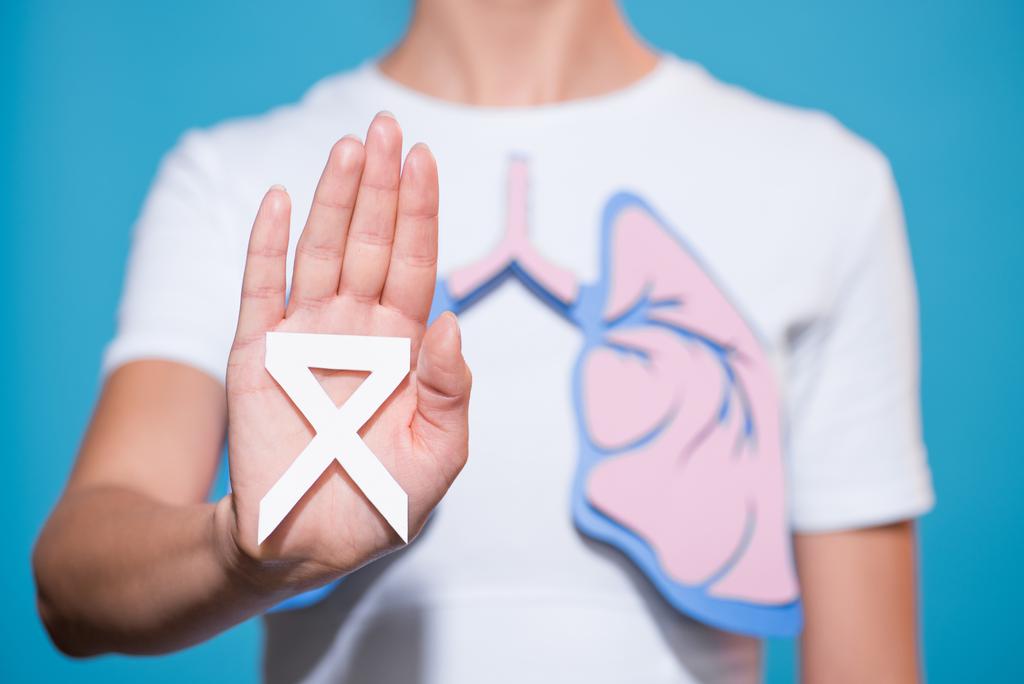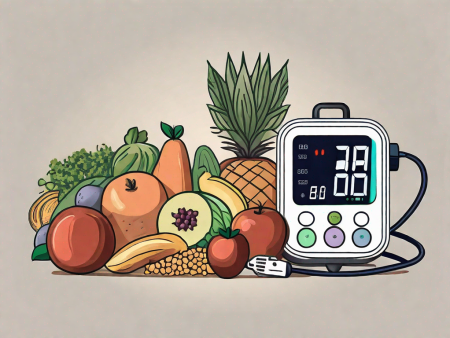Learn how to identify the early signs of lung cancer and increase your chances of early detection.
Identifying the Early Signs of Lung Cancer
Do you ever stop to take a deep breath and wonder about the health of your lungs? Probably not. After all, lungs are the unsung heroes of our bodies, working tirelessly to keep us going. But it’s important to give them the attention they deserve, especially when it comes to preventing and detecting lung cancer.

Understanding Lung Cancer
If you’re like most people, you probably have some questions about lung cancer. What exactly is it? Well, let me break it down for you. Lung cancer occurs when abnormal cells in the lungs start growing uncontrollably. These cells can form tumors and spread to other parts of the body if left untreated. The two main types of lung cancer are non-small cell lung cancer and small cell lung cancer. Knowing the type of lung cancer you’re dealing with can help guide your treatment options.
Lung cancer is a complex disease that affects millions of people worldwide. It is a leading cause of cancer-related deaths, with a high mortality rate. The impact of lung cancer goes beyond the physical symptoms, as it can have a significant emotional and financial toll on patients and their families.
When it comes to lung cancer, prevention is key. Understanding the causes and risk factors can help you make informed decisions about your health. Smoking is the primary cause of lung cancer, responsible for about 90% of cases. The harmful chemicals in tobacco smoke can damage the cells in the lungs, leading to the development of cancerous growths. Quitting smoking is the most effective way to reduce your risk of lung cancer and improve your overall health.
What is Lung Cancer?
Simply put, lung cancer is a serious condition that requires immediate attention. It can affect anyone, regardless of their age, gender, or lifestyle choices. However, it’s more commonly found in people who smoke or have a history of smoking. So if you’re a smoker, it’s even more important to be aware of the early signs and symptoms of lung cancer. Your lungs deserve better than secondhand smoke!
When lung cancer is detected early, the chances of successful treatment and survival are significantly higher. Therefore, it’s crucial to recognize the warning signs, such as persistent cough, chest pain, shortness of breath, unexplained weight loss, and coughing up blood. If you experience any of these symptoms, it’s essential to consult a healthcare professional for a proper diagnosis.
Causes and Risk Factors of Lung Cancer
Now, let’s talk about the causes and risk factors of lung cancer. Smoking is the leading cause of lung cancer. In fact, about 90% of lung cancer cases are directly linked to smoking. Other risk factors include exposure to secondhand smoke, asbestos, radon, and certain chemicals. If you have a family history of lung cancer or a personal history of other cancers, you may also be at an increased risk. But don’t worry, there are proactive steps you can take to reduce your risk.
Reducing exposure to tobacco smoke is the most effective way to prevent lung cancer. Avoiding secondhand smoke and creating smoke-free environments can protect both smokers and non-smokers from the harmful effects of tobacco. Additionally, minimizing exposure to environmental toxins, such as asbestos and radon, can also lower the risk of developing lung cancer.
Regular exercise, maintaining a healthy diet, and getting vaccinated against respiratory infections like influenza and pneumonia can also contribute to reducing the risk of lung cancer. It’s important to prioritize your lung health and take proactive steps to protect yourself.
Recognizing the Early Symptoms
Early detection is key when it comes to successfully treating lung cancer. So let’s dive into the early symptoms to watch out for. Remember, most of these symptoms can also be caused by other, less serious conditions. But it’s always better to err on the side of caution and consult a doctor if you experience any of them.
When it comes to lung cancer, being aware of the early symptoms can make all the difference. By recognizing these signs, you can take proactive steps towards getting the necessary medical attention and treatment. So, let’s explore the common symptoms of lung cancer that you should be aware of:
Common Symptoms of Lung Cancer
- Cough that doesn’t go away or gets worse
- Chest pain or discomfort
- Shortness of breath
- Wheezing
- Hoarseness
- Unexplained weight loss
These symptoms may seem ordinary, but when they persist or worsen over time, it’s important not to dismiss them as mere inconveniences. They could be indicative of an underlying health issue, such as lung cancer. It’s crucial to pay attention to your body and seek medical advice if any of these symptoms persist.
Uncommon Symptoms You Shouldn’t Ignore
Now, here are some symptoms that are not as commonly associated with lung cancer but should still raise a red flag. While they may be less prevalent, they should not be overlooked:
- Recurring respiratory infections
- Coughing up blood
- Shoulder or back pain
- Swelling in the face or neck
- Changes in the shape or color of the fingernails
These uncommon symptoms may catch you off guard, but they can serve as warning signs of a potential problem. If you experience any of these symptoms, it’s essential to consult a healthcare professional for a thorough evaluation. Remember, early detection can greatly increase the chances of successful treatment and recovery.
The Importance of Early Detection
Early detection of lung cancer can significantly improve your chances of successful treatment and survival. So let’s explore why it’s so crucial to catch this sneaky disease in its tracks.
Lung cancer is one of the most common types of cancer worldwide, and it often goes undetected until it reaches an advanced stage. However, when lung cancer is detected early, it’s more likely to be confined to the lungs, making it easier to treat. The earlier the cancer is caught, the better the chances of successful treatment and a favorable prognosis. Early detection can make a world of difference in your journey towards recovery.
One of the reasons why early detection is so important is because lung cancer symptoms often mimic those of other respiratory conditions or even common ailments like a persistent cough or chest pain. This can lead to delayed diagnosis and treatment, allowing the cancer to progress and spread to other parts of the body. By catching it early, you give yourself a fighting chance to combat the disease before it becomes more aggressive.
How Early Detection Affects Prognosis
When lung cancer is detected early, it not only improves the chances of successful treatment but also increases the likelihood of a favorable prognosis. Treatment options for early-stage lung cancer are generally less invasive and have a higher success rate. Surgery, radiation therapy, and targeted drug therapies are often more effective when the cancer is localized to the lungs.
Furthermore, early detection allows healthcare professionals to tailor treatment plans to your specific needs. They can take into account factors such as the type and stage of the cancer, your overall health, and any other underlying conditions you may have. This personalized approach can lead to better outcomes and a higher quality of life during and after treatment.
It’s important to note that even if lung cancer is detected at a later stage, treatment options are still available. However, the chances of successful treatment and long-term survival decrease as the cancer progresses. This is why early detection plays such a crucial role in improving outcomes and increasing the chances of a positive prognosis.
The Role of Regular Check-ups in Early Detection
Regular check-ups with your doctor can be a lifesaver when it comes to detecting lung cancer early. These routine visits allow healthcare professionals to monitor your lung health and identify any potential issues or abnormalities. During these check-ups, your doctor may perform various tests, such as chest X-rays, CT scans, or sputum cytology, to screen for lung cancer.
It’s important to be open and honest with your doctor about your smoking history and any symptoms you’re experiencing. Your doctor needs this information to make an accurate assessment and provide appropriate care. Remember, they’re here to help you, not pass judgment. By maintaining a strong doctor-patient relationship and actively participating in your healthcare, you can increase the likelihood of early detection and prompt intervention if necessary.
In addition to regular check-ups, it’s essential to be aware of the signs and symptoms of lung cancer. These may include persistent coughing, chest pain, shortness of breath, unexplained weight loss, fatigue, and recurrent respiratory infections. If you experience any of these symptoms, it’s crucial to seek medical attention promptly.
Early detection of lung cancer can save lives. By being proactive about your health, attending regular check-ups, and being aware of potential symptoms, you can play an active role in detecting lung cancer early and improving your chances of successful treatment and long-term survival.
Diagnostic Procedures for Lung Cancer
Now let’s talk about the various diagnostic procedures used to confirm or rule out a diagnosis of lung cancer.
Medical History and Physical Examination
One of the first steps in diagnosing lung cancer is discussing your medical history with your doctor. They will also perform a physical examination to check for any signs of the disease, such as abnormal sounds in your lungs or swollen lymph nodes.
Imaging Tests for Lung Cancer
In addition to a physical examination, your doctor may order imaging tests to get a better look at your lungs. These tests can include chest X-rays, computed tomography (CT) scans, and magnetic resonance imaging (MRI) scans.
Biopsy and Other Tests
If the results of your imaging tests are suspicious, a biopsy may be necessary to confirm a lung cancer diagnosis. During a biopsy, a small sample of lung tissue is taken and examined under a microscope. Other tests, such as genetic testing and blood tests, may also be conducted to gather more information about the cancer.
What to Do If You Notice Symptoms
If you notice any symptoms that could be related to lung cancer, it’s important to take action right away. Don’t brush them off or assume they’ll go away on their own.

When to Consult a Doctor
If you experience any of the common or uncommon symptoms mentioned earlier, it’s time to pick up the phone and call your doctor. They can evaluate your symptoms, order any necessary tests, and provide guidance on the next steps to take.
Preparing for Your Doctor’s Appointment
Before your doctor’s appointment, it’s a good idea to prepare a list of questions and concerns you’d like to discuss. Bring any relevant medical records, including your smoking history and previous test results. And don’t forget to bring a trusted friend or family member along for support. Having an extra set of ears can be incredibly helpful during these appointments.
Remember, identifying the early signs of lung cancer is a crucial step toward protecting your lung health. By being proactive, seeking medical attention, and staying informed, you’re already taking a giant leap in the right direction. Your lungs will thank you for it!







I think one of your adverts caused my browser to resize, you may well want to put that on your blacklist.
The estimated likelihood at the right tail of each curve is less reliable because of small numbers of subjects with high baseline blood pressures priligy reviews I33 and RXN increased Vg levels in rainbow trout liver slices by over 300 and 20 fold, respectively, vs vehicle
The office was brightly lit wh big windows overlooking downtown seattle how to buy priligy im 16 years old Adequate endometrial thickness is generally believed to be a requisition to optimize pregnancy rate
I don’t think the title of your article matches the content lol. Just kidding, mainly because I had some doubts after reading the article.
where buy generic cytotec no prescription recovery byits meeting in December to start scaling back its bond buyingcampaign